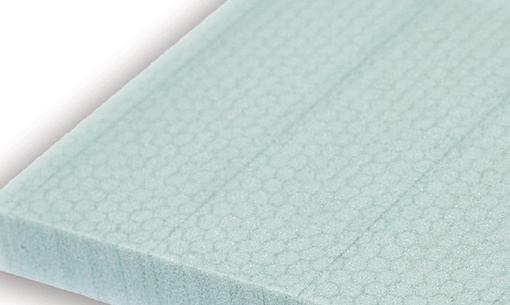Core
Composite structures are designed in two directions namely x and y. The strength is achieved in these two directions. Laminates are piled upon each other to create thickness in the z direction (perpendicular to the surface). Many times when force is applied in the z direction, the fibres have very little ability to resist it. Hence to overcome this issue, sandwich structure is used. Core material is bonded in between two face sheets of composite laminates which creates a sandwich pattern.
The primary function of the core is to increase the stiffness and provide flexural strength by the increase in the thickness caused by introduction of core in between laminate face sheets at a minimal increase in overall weight.
Some of the types of core material are given below.
PU foam
Rigid polyurethane foam is cut into desired shape to be used as sandwich between laminates. Polyurethane foam provides good thermal insulation and can be used in applications with elevated temperatures. They also have good acoustic absorption.

PET foam
PET foam is a closed-cell thermoplastic structural foam. PET foam is more durable and environment friendly compared to PVC foam. PET foam is better than PVC foam for density, water absorption rate, tensile strength, compressive strength, shear strength, bending strength, bending fatigue performance. It also has superior bonding strength with most resins. PET foam also has excellent heat resistance properties.

PVC foam
Closed cell, linear and cross-linked PVC foams are tough, rigid materials and their high strength and stiffness to weight ratio makes them ideal for the production of light weight sandwich panels. They also have low moisture absorption and also do not rot.

Honeycombs
Honeycomb is available in a variety of cell configurations; the most appropriate configuration depends on application requirements. Extremely lightweight panels can be manufactured by using honeycomb cores. Honeycomb materials include polypropylene, aluminium. The physical properties vary to a great extent with the specific material and density.

Balsa Wood
End-grain balsa wood has been used as a core material for many years. Classified as a hardwood, balsa has a very high strength to weight ratio and can be used in structural or non-structural applications. As a non-synthetic (ie. natural) product, balsa can be inconsistent in density and unless it is kiln dried, its moisture content can cause problems. It is also generally denser than most foam core materials.
